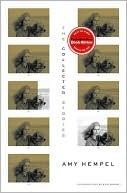More on this book
Community
Kindle Notes & Highlights
It’s all about the sentences. It’s about the way the sentences move in the paragraphs. It’s about rhythm. It’s about ambiguity. It’s about the way emotion, in difficult circumstances, gets captured in language. It’s about instants of consciousness. It’s about besieged consciousness. It’s about love trouble. It’s about death. It’s about suicide. It’s about the body. It’s about skepticism. It’s against sentimentality. It’s against cheap sentiment. It’s about regret. It’s about survival. It’s about the sentences used to enact and defend survival.
Tumble home. It’s a shipbuilding term I learned from Warren. It’s the place on a ship that is, if I understand him, the widest part of the bow before it narrows to cut through water—it is the point where the water parts and goes to one side of the ship or the other. To me, the tumble home is the place where nothing can touch you.
He was a kind man with whom it was hard to talk. So I listened. I followed, somewhat, his periodic sentences as they wound to their elegant ends. My visit was years too soon. I did not make the most of it. I should have pressed him about the difference between originality and creativity, about his feeling that confusion was caused by the lack of genuine feeling.
On a day early in the New Year, I looked through the catalogs my father kept in his basement. I found the transcript of a talk that Brookmyer had given in his youth, and entered in my diary this fragment of a quote about the importance of an artist’s capacity to absorb “the shocks of reality” and to “reassert himself in the face of such shocks, as when a dog shakes off water after emerging from the sea.”


